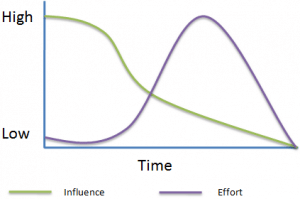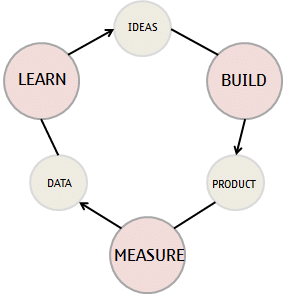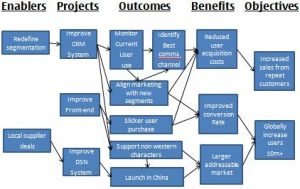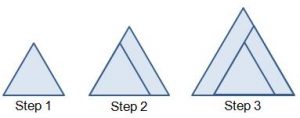In this article I want to cover exactly what program management is all about. The PMI defines program management as “A group of related projects managed in a coordinated way to obtain benefits and control not available from managing them individually”. Whilst that definition undoubtedly makes sense, I want to examine why program management exists, and look at the the key areas of program management to give you a good feel for what it involves.
Why Does Program Management Exist?
Many organizations find that there is a need to manage very complex initiatives. These initiatives may combine software delivery, hardware delivery, new business models, new or changed business processes, new partners and distribution channels, new organizational structures, and can even result in changes to the capabilities of the organization as a whole.
The list of changes above covers just a few of those which may occur in a complex initiative, there could of course be many more. Because these initiatives are so complex, when they are initiated the eventual deliverables may not be known or understood, and usually it is not even understood what projects need to be executed. With all this complexity, multiple projects spanning multiple parts of the organization, unknown deliverables, and with organizational capability being different at the end of the initiative, it isn’t hard to see why traditional project management breaks down. Thus program management arose from the need to manage complex and far reaching bodies of work beyond the scope of project management.
What is Program Management?
Let’s revisit the PMI’s definition of program management as being, “A group of related projects managed in a coordinated way to obtain benefits and control not available from managing them individually”. Hopefully, from the previous paragraphs you can see the need for this integrated approach when the initiative is complex in its execution, and broad in its organizational impact. What though, at a practical level, does this integrated approach mean? I think the best way to answer this question is to look the the major areas a program manager will address as they execute a program.
The five major areas of a program manager will address during a program lifecycle are as follows:
- Program Governance
- Program Leadership
- Financial Management
- Program Execution
- Program Planning
Let’s review what each of these categories in turn to give you a broad, high level understanding of program management.
1. Program Governance
Program governance involves defining the governance structure so that the program can be guided and directed during its execution. There are two parts to this:
Part 1: the program manager will establish their program management team so that they can direct each of the projects in the project. Typically, the team will be made up of project managers and optionally program managers (who run any sub programs). At this stage the program manager will also establish the operational rules for the program, such as how often the team will meet, the process for managing risks, communication practices, reporting practices etc., essentially establishing the program operational cadence.
Part 2: whereas the program manager steers the individual projects, a steering committee (to include a program sponsor) will be established to steer and direct the overall program itself. This steering committee will be comprised of senior leaders from within the organization and will also provide a link to the strategic direction of the organization.
2. Program Leadership
The term leadership is chosen deliberately as program management is closer to leadership than it is to task management, and this topic refers to the practices of the program manager in leading the program. This will include leading high-level meetings to develop the plan. Providing steering to project managers as to how to structure their plans. Review and approval of all project plans. Here the program manager will be looking to ensure that dependencies between projects are resolved and that the individual project plans fit the program plan.
The program manager is also the “face” of the program, and as such they spend a major amount of their time communicating and establishing connections. Because programs are large undertakings frequently involving 100s or even 1000s of people, it is the program manager who is “on point” for the program. By regularly communicating broadly to the entire team and beyond, using a range of channels, everyone within the organization who is even lightly touched by the program should be aware of who is the program manager. These individuals then have in the program manager, someone they can contact if they have any questions or concerns about the program. If the program manager is unable to answer the question themselves they will establish a connection to the right person within the program management team to address the question or handle the issue.
The program manager also consolidates the individual project status reports and provides an overall view of the program progress to the steering group, escalating issues (often brought as decisions) as required.
3. Financal Management
This aspect of program management relates to the financial policies and practices used to govern the program. Because programs are so much larger than projects the costs incurred with be significantly higher. To understand why, let’s first examine the costs involved in a typical project. For our example we have an IT (resource only) project made up of a 10 man team, taking 4 months to complete, with an internally charged rate of $1,000 per day. This would result in a project cost (assuming 20 working days per month) of $800,000 ($1,000 x 20 x 4 x 10). Because programs are made of multiple projects they have costs which are typically an order of magnitude larger. As an example of this let’s quickly consider what might have been involved for Apple to run the program to launch the iPAD.
Image by twid.
Even ignoring hardware and software R&D costs, Apple would still incur the cost of buying the parts to build the iPADs, perhaps 5 million units at say $50 per unit. That’s $250 million just in components. Then they’d have to tool, gear up, and then run a factory to build the devices. This could easily cost $5 million plus. Then they’d need substantial marketing efforts in all launch territories, to include TV ads, print ads, out of house campaigns, roadshows etc. Even assuming we launch in just 5 territories and have a modest budget of $5 million per territory, that’s still another $25 million in costs. They would also have distribution costs to get the devices from the factory to the retail channels. The costs of designing, manufacturing, and localising the pretty boxes the iPADs come in. Plus many more costs. All of these costs and projects would have to coordinated, managed, and delivered at the right time. I hope this gives you a feel for why its not uncommon for programs to range in budget from $200 million to $1 billion plus.
As you can see from the example above, there isn’t just a greater cost incurred in running programs over projects, but also greater types of costs incurred. Because of the much greater cost and types of cost incurred, programs will need different apparatus to projects for managing the costs involved. Financial management of the program will usually involve top-level leadership, such as the CFO. The management of the program budget will usually have it’s own milestones and checkpoint reviews.
4. Program Execution
This category is a catch all for everything else that needs to be done to support the program execution. It will include, but is not limited to:
- Risk Management
- Procurement
- Issue Management
- The PMO (Program Management Office)
- Project Reporting Management
- Communications Management
- Project tracking
- Project work package review and approval
- Program assurance
- Model Office
- E2E test activities
- Training Management
- Benefits Management
Let’s examine Program Assurance from the list above. Because programs involve such large budgets, program assurance is a function which works independently of the program on behalf of the program steering committee. The role of program assurance is to provide independent assurance to the steering committee that the program is being run in accordance with any policies or standards which need to be adhered to, such as Sarbanes-Oxley or ISO standards.
5. Program Planning
A large part of a program manager’s time will be concerned with program planning. This is not planning how you might think of it within a project management context. Project plans are put together to deliver deliverables and work packages. Program plans are something different. They are an integrated visualization of the key deliverables of the program. The program plan will be structured so as to deliver benefits in the best possible way to the organization.
Note that program planning also encompasses managing and resolving the dependencies between projects. Each organization or individual program manager will have their own way of managing dependencies, but one common way is to use a benefits dependency network.
Programs are large and complex, so typically plans will be created in a number of iterations and involve both top-down and bottom up planning. Top down in the sense that the program manager will provide guidance to the project teams on when their projects should deliver what. Bottom up in the sense that the project managers will then work within their project team to produce the bottom up plan and provide this to the program manager. If this plan fits nicely within the overall program plan then great, if not, then a negotiation starts and the plan (project or program) is re-calibrated, and the initial program plan is ready for approval.
Summary
The need for program management arises when organizations wish to manage complex bodies of work that span multiple functional units of an organization, potentially having a large impact on the future shape of the organization itself. Program managers coordinate a number of projects to realise benefits to the organization that could not be achieved if the projects were run independently, but program managers are not project managers. The five main categories within which a program manager will work, described in detail above, are: program governance, program leadership, financial management, program execution, and program planning. This article has just scratched the surface as to what program management is, you will find lots more information relating to program management throughout the rest of this site.







